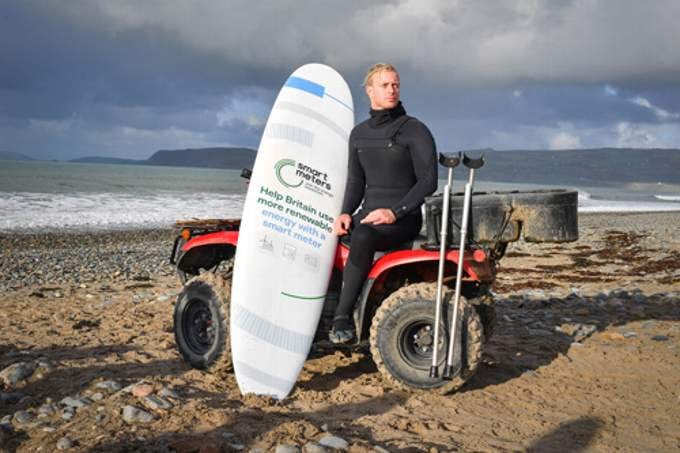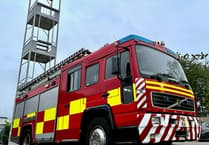ABERSOCH-based, world renowned adaptive surfer Llewelyn Williams has teamed up with Smart Energy GB to reveal the power of Great Britain’s weather to create renewable energy.
This week at Hell’s Mouth, Porth Neigwl, one of the world’s best adaptive surfers, talked about how the power of the Welsh wind has shaped his career and is encouraging the nation to join the fight against climate change by getting a smart meter installed.
Smart meters are part of a smarter, more flexible grid, which will help us use more of Great Britain’s rich renewable energy sources, including wind and sunshine, to power our homes.
With the British weather being unpredictable, the smart energy system along with other technology will enable energy to be stored and reused at a time when the sun isn’t shining, and the wind isn’t blowing.
Llewelyn’s love of surfing began in Abersoch, where he grew up and started his career to surfing success practising on the waves.
The area’s beaches were the perfect place for him to start his surfing journey. He started at an early age and competed in local competitions. But his life drastically changed in September 2011, when he was just 16 years old.
Skateboarding home, he was hit by a car and suffered life-threatening injuries, including dislocating both hips, a head injury, broken femur, shattered pelvis, punctured lung, perforated bowel and a split liver.
He had to have his leg removed because the muscle was turning to poison because he had lost so much blood.
But against all the odds, he overcame his injuries and was back in the water just two months after the accident.
Llewelyn said: “I’ve surfed from Bali to California but catching waves off the Welsh coast will always remain the most special place for me.
“The Welsh wind isn’t just perfect for surfing… it’s also a brilliant source of renewable energy. We’re just a stone’s throw away from Gwynt y Môr, the fifth biggest operating offshore windfarm in the world.
“We should be harnessing the power of our amazing Welsh weather more.
“But power from wind farms is under-utilised because our energy infrastructure is not as intelligent as we need it to be.
“That’s why I’m encouraging everyone to get a smart meter installed – so we can make better use of energy generated by the wind.”
The UK has nearly 40 operational offshore and a whopping 2,500 onshore wind farms across the country. Totalling just under 10,000 turbines and generating nearly 25GW of electricity a year, wind power offers the most cost-effective choice for new electricity in the UK.
Wales’ three offshore windfarms are all located in Liverpool Bay, less than one hour’s drive from Gwynedd beach: North Hoyle (60MW), Rhyl Flats (90MW) and the fifth largest operational offshore windfarm in the world Gwynt y Môr (576MW).
Almost a quarter of the UK’s electricity was generated by wind turbines in 20203, yet less than a third (29%) of Welsh residents are aware of how much energy is generated from renewable sources and that the wind is our largest source of renewable energy.





Comments
This article has no comments yet. Be the first to leave a comment.